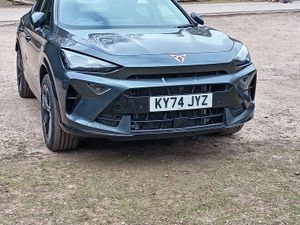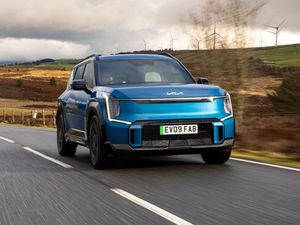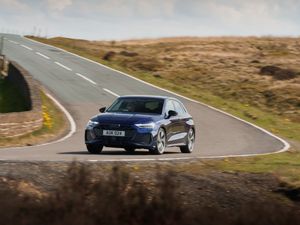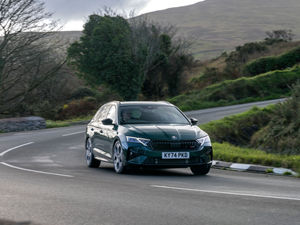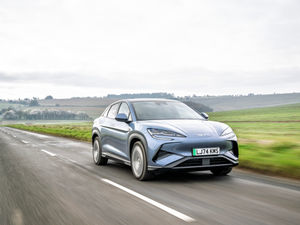New Audi A3 road test: 2016 upgrade is cleaner and leaner
Audi seems adept in its marketing strategy by filling niches: ensuring that even among its mainstream models there are no gaps left for its competitors to fill.
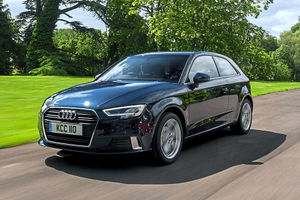
So you may not be surprised that from now its dealers will be able to supply any one of 127 different versions of its new A3, with four bodystyles, six engines and a range of trim levels at prices from under £21,000 to £36,480.
Audi was well established itself as a premium car maker when it launched the first A3 in 1996.
It was, perhaps, a successful gamble: buyers DID want the option of a smaller car with premium credentials: so much so it became the company's biggest seller – 1.8 million last year.
Now many of the features of bigger, more expensive cars in the Audi range have filtered down to the new A3, raising its game still further.
You can, for example, have the same high-tech 'virtual cockpit' as the flagship R8 supercar, and the latest infotainment system with facilities for wireless phone connection and charging, fully integrating the phone with the car's central screen.
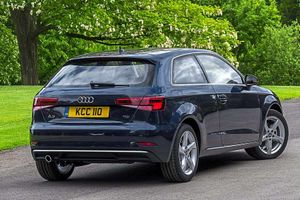
There's also a glimpse of the future and the autonomous car – the option of traffic jam assist whereby the car can drive, stop and steer itself in traffic at speeds of up to 38mph.
It uses the now familiar adaptive cruise control system – using radar to maintain your gap behind the car in front – and a camera to detect white lane lines on either side and keep you on the straight and narrow. The idea is to relieve the strain of the driver in that all-too-familiar traffic crawl – but as a safety measure it only operates if you keep your hands on the wheel.
A major player in the new range could be the entry level version at £20,915 powered by the group's new TFSI turbocharged, three cylinder, one litre petrol engine.
I wasn't able to drive it in the A3, but only a couple of weeks ago tested it in VW's Golf and it is something of a revelation: it's hard to believe it's such a small capacity unit because it turns out 115bhp and the torque of a small diesel.
It pulls strongly from low revs, cruises effortlessly and tackles the 0 to 62mph sprint in under ten seconds with a fuel average of up to 60mpg and a low 107g/km CO2 rating.
The other new engine option is a 2.0 litre TFSI, producing 190PS (0 to 62mph in 6.8 seconds and 49.6mpg), while flagship S3 models get the option of the same engine uprated to a whopping 310PS.
Vital statistics of 0 to 62mph in 4.5 seconds with official fuel figures of 44.1mpg put it firmly in competition with the hottest of hot hatchbacks.
Having driven several new A3s back to back, for me the pick of the bunch was the S-Line (the most popular trim level in the previous line-up) powered by the third petrol engine, the 1.4 TFSI.
This £24,530 model – plus options such as the £1,395 advanced technology pack, £425 rear parking sensors and £125 for the auto-dimming rear view mirror – is a quick car, hitting 62mph in 8.1 seconds.
With its 150PS of power and extra torque from the turbo, it's very responsive and cruises effortlessly, like a car with significantly greater cubic capacity.
The lighter weight of a small petrol engine, combined with the S-Line's sports suspension, makes this model feel particularly light and agile along twisty country roads.
The big sports seats and the leather clad, flat-bottom sports steering wheel with multi-function buttons, dual zone air conditioning and a superbly laid out cockpit make it a nice place to be.
It feels like a GT – but it is capable of an official average of 60mpg (by coincidence its average over the test route exactly matched that of the 2.0 diesel A3).
I confess the petrol model was set into efficiency mode – there other modes such as sport which significantly sharps its responses, comfort or auto – but the result was nonetheless impressive.
That's partly because of the now proven benefits of a small capacity engine combined with turbocharging, plus it has cylinder on demand technology.
It closes the valves and shuts down one of its four cylinders under light load, while cruising or going down hill.
More familiar to A3 drivers would be the 1.6 litre diesel, with 110PS of power and 250Nm of torque. It is nippy, with a 0 to 62mph sprint time of 10.5 seconds, and capable of up to 70mpg in official tests. CO2 emissions are a low 108g/km.
It takes a keen eye to spot the differences between the new A3 and its predecessor. The essential changes are new headlights, plus a wider grille and apron to give the car a rather more aggressive face.
But there are extensive changes under the skin, from new technology to new, more efficient engines and – something else you can't see – the new models are up to 90kg lighter than their predecessors, further improving fuel economy and driving dynamics.
Improvements to the new A3 underline its claims to premium status, while also offering leaner, cleaner motoring and a first rate experience to the driving enthusiast.

